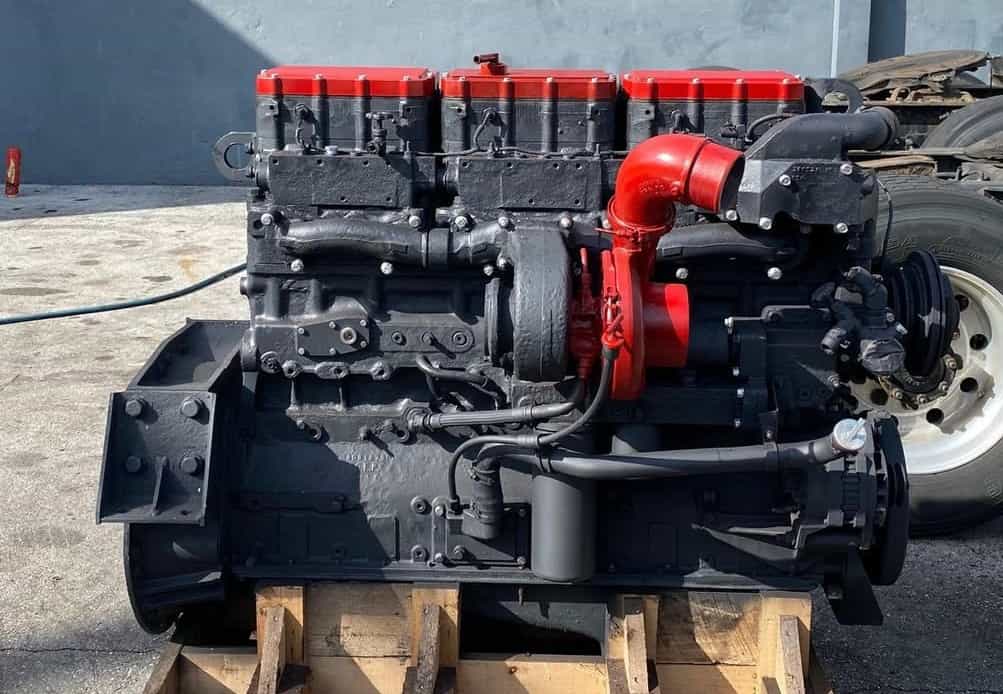Are you interested in performing a Cummins N14 horsepower increase?
The Cummins N14 is without a doubt a fantastic engine. In fact, it may be one of the best engines ever produced by Cimmins.
There is absolutely so much to expect from this engine – it is the stuff dreams are made of, particularly for those who are looking for dependability, robust performance, and bang for the buck.
The engine showcases the best when it comes to engineering fundamentals, combined with a state of the art electronic control system.
But what if you wish to do a Cummins N14 horsepower increase? Is this possible? If so, how hard and expensive can it be? Keep reading to learn more.

Cummins N14 Horsepower Increase
The N14 was first designed in the later 1980s and it was finally sent into its full production by 1991. This engine is designed to be a follow up to another popular one, which is the Cummins 855 that was produced between 1976 and 1985.
Due to a great demand for a more powerful and better version of the Cummins 855 while keeping the same bore/stroke architecture and profile, a new engine was created, which was the N14.
Primarily, the main structural difference between these two engines is in the air to air cooling system, yet in other areas, these engines are pretty much similar in terms of power and performance.
Moreover, the N14 was in production until the early 200s. There have been vast changes observed over the decade-long run for the Cummins. For instance, the most striking change was the addition of the ECM. When Detroit Diesel first introduced its first electronic diesel engine for commercial use in 1987 with the Series 60, Cummins decided to follow suit.
Furthermore, with the inception of the initial EPA tier emissions regulations back in 1994, this is only the start of electronic diagnostics as one of the key elements in diesel engines. The N14 Celect paves the way for the first engine by Cummins to include an electronic injection system. It produces a systematic pressure in all of the injection cycle, which is different from the common rail fuel system observed in the 855 and other older models.
Thus, the N14 Celect Plus was introduced in 1997 with a more sophisticated ECM that controls the fuel system’s more custom parameters.
As for the horsepower that the Cummins N14 is able to produce, it goes from 310 to a whopping 524 horsepower. Moreover, the engine can generate 1250 up to 1850 pounds of torque, and at an impressive 1200 RPM.
But if this horsepower is not enough for you, then you can do a Cummins N14 horsepower increase. The CPL plate on your engine is found on the driver’s side, specifically on the accessory drive. You should be able to see the CPL number and your overhead specs, and you could see the horsepower rating at a specific RPM.
You can typically upgrade your horsepower with a brand new flash of your ECM, yet this would involve some uncommon parts. For instance, you need a reflash, as well as an upgrade of the injector. And do keep in mind that injectors are not cheap. This is why it can be quite limiting for some people, considering the massive expense linked with this horsepower increase.
Read More: Cummins N14 Engine Position Sensor Problems – All You Need To Know!
Conclusion
Is a Cummins N14 horsepower increase worth it? As it is, the N14 has decent horsepower that can most certainly get the job done. However, for people who want more horsepower, then they consider increasing the current one, which is a lot of work – and a lot of money.
So, it may be worth looking into the costs involved such as for the new injectors and reflash. Then, you can decide if you still wish to go down this route or maintain the same horsepower your N14 has.
I had a 1997 Peterbilt with an N 14, 525+ engine in it one of the best trucks and engines I’ve ever drove in my life and I’ve been driving for 38 years.
Hi Rob,
It’s great to hear that you had a positive experience with the 1997 Peterbilt equipped with an N14, 525+ engine. The N14 engine, manufactured by Cummins, is well-regarded in the trucking industry for its reliability and performance. It’s known for its durability, making it a popular choice for heavy-duty trucks.
Having driven for 38 years, you likely have a wealth of experience and stories from your time on the road. Truck drivers play a crucial role in transportation, and the vehicles they operate are vital to the economy. If you have any specific memories or aspects of your driving career that you’d like to share or discuss, feel free to do so!